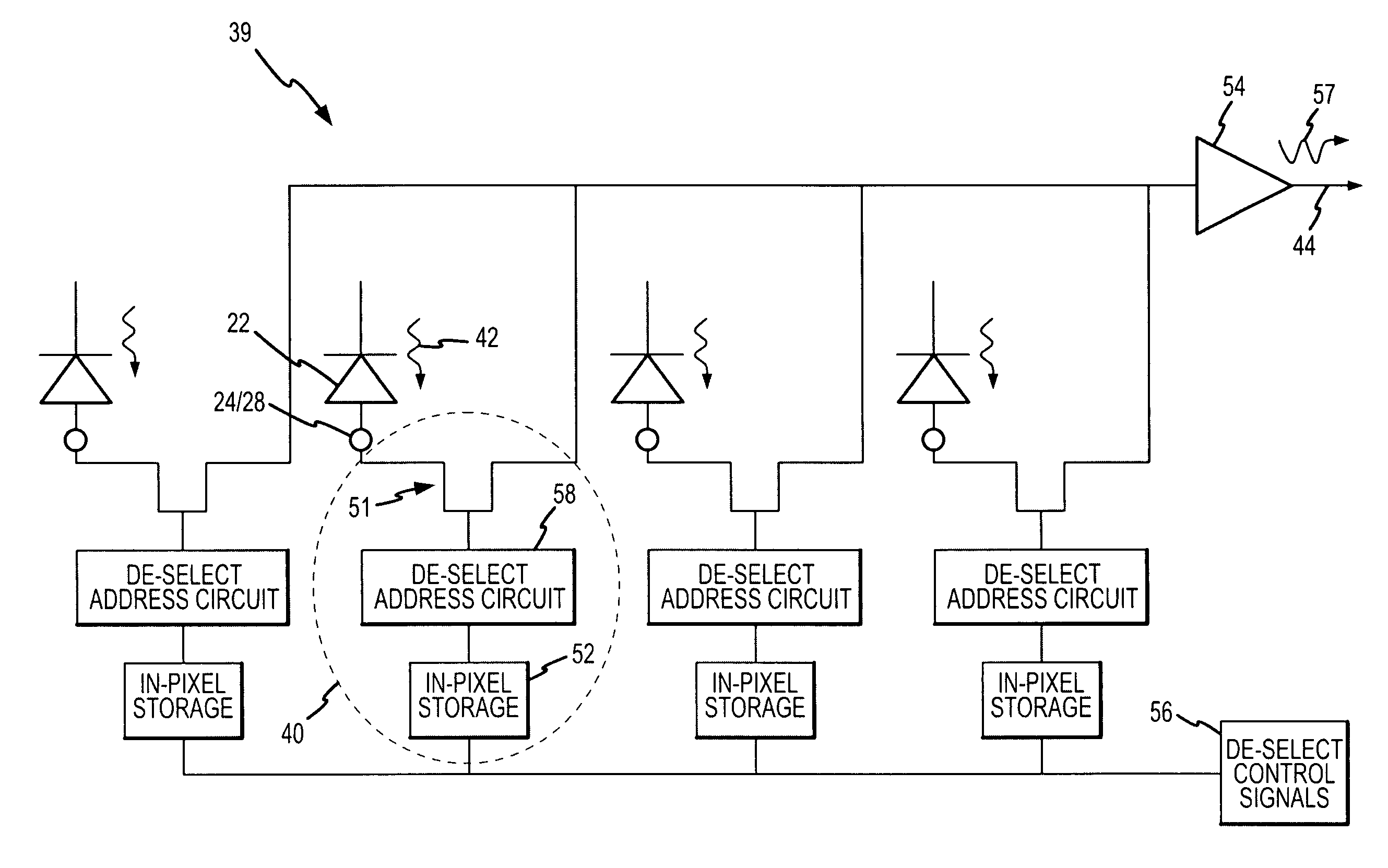Microlensed focal plane array (FPA) using sub-pixel de-selection for improved operability
a focal plane array and micro-lensed technology, applied in the field of micro-lensed fpas, can solve the problems of poor image uniformity, defective or bad detectors are typically much worse than, and the optical collection efficiency of smaller detectors is reduced, so as to improve the collection efficiency, reduce the impact, and be cost-effective.
- Summary
- Abstract
- Description
- Claims
- Application Information
AI Technical Summary
Benefits of technology
Problems solved by technology
Method used
Image
Examples
Embodiment Construction
[0017]The present invention provides an FPA having a plurality of sub-pixel detectors per pixel, wherein radiation is directed to all of the detectors in each pixel by a microlens array and any defective detectors are de-selected in the ROIC. An FPA comprises three essential components: a microlens array, a detector array and a ROIC. The present invention modifies the detector array and ROIC to provide for de-selection of bad sub-pixel detectors in each pixel at manufacturer and, possibly, during periodic recalibration to improve operability. The present invention uses conventional microlens designs that are independent of the de-selection of particular sub-pixel detectors. This allows for the use of a single standard microlens mask set for each FPA to keep costs down.
[0018]There are many types of FPAs for detecting electromagnetic radiation of varying wavelengths. This invention is applicable to virtually any type of FPA, and is most useful for very long wavelength Infrared (VLWIR)...
PUM
 Login to View More
Login to View More Abstract
Description
Claims
Application Information
 Login to View More
Login to View More - R&D
- Intellectual Property
- Life Sciences
- Materials
- Tech Scout
- Unparalleled Data Quality
- Higher Quality Content
- 60% Fewer Hallucinations
Browse by: Latest US Patents, China's latest patents, Technical Efficacy Thesaurus, Application Domain, Technology Topic, Popular Technical Reports.
© 2025 PatSnap. All rights reserved.Legal|Privacy policy|Modern Slavery Act Transparency Statement|Sitemap|About US| Contact US: help@patsnap.com



